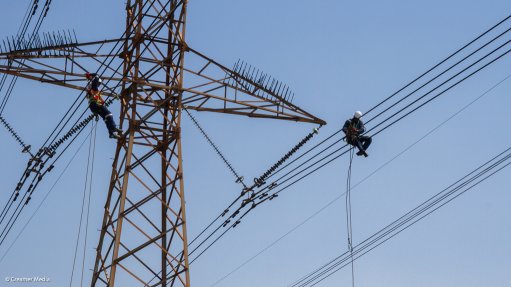
Photo by: Duane Daws
As South Africa continues to battle electricity shortages, the threat of load-shedding and imposed load curtailment on large industrial users, the country’s research and development fraternity is increasingly making the case for the development of home-grown mitigation and energy efficiency solutions, it emerged at an afternoon session of the tenth Southern African Energy Efficiency Conference, on Wednesday.
“Local innovation can help with our energy issues - we don’t necessarily have to go outside the country to find solutions,” session chairperson and Technology Innovation Agency national project manager Gershwin Mckuur remarked.
Buoying the local energy efficiency innovation case, Clear Sky Energy CEO Mark Booth presented his company’s patented waste-to-energy technology, telling delegates that the system featured a counter-flow vortex combustion chamber that generated temperatures of 2 500 ˚C in the core stream, completing combustion at 99.8%.
“The plant is compact enough that we can put it directly where the waste is produced, mitigating energy-related industrial challenges, such as increased energy tariffs, solid waste levies, carbon taxes and other waste-related levies,” he commented.
He revealed that the company had already installed a waste-to-energy plant in Mozambique that converted coconut shells to active carbon that was sold to South African gold mining companies.
“At the moment, South African gold miners are spending about $20-million a year on this highly active carbon,” he said, adding that the company was also investigating waste-to-energy opportunities in the medical and hazardous waste sectors.
Further underpinning the trend of emerging South African energy efficiency innovations, technology start-up PowerOptimal CEO Dr Sean Moolman introduced his company’s demand-side management offering, which was aimed at avoiding peak-time demand charges for industrial and commercial users of energy.
“We find that when we engage with companies, the vast majority don’t know about the peak demand charges on their electricity bill. They don’t know how [the demand-side system] works and how they can save on it,” he said.
PowerOptimal’s PowerGuard peak power demand management technology aimed to shift the use of nonessential devices, such as electric water heaters, geysers, boilers, air conditioners and swimming pool pumps, into a low-demand period, thus avoiding peak-time charges.
This was, he asserted, done in such a way as to achieve substantial peak-power reductions without any impact or inconvenience to the end-user.
According to Moolman, most South African companies paid up to 25% too much for electricity owing to poor load management.
“Our automated load-shifting technology allows an up to 50% reduction in peak demand and a 25% reduction in electricity costs by shifting loads to non-peak times.
“It’s also a proven technology, with over 50 installations already completed,” he commented.